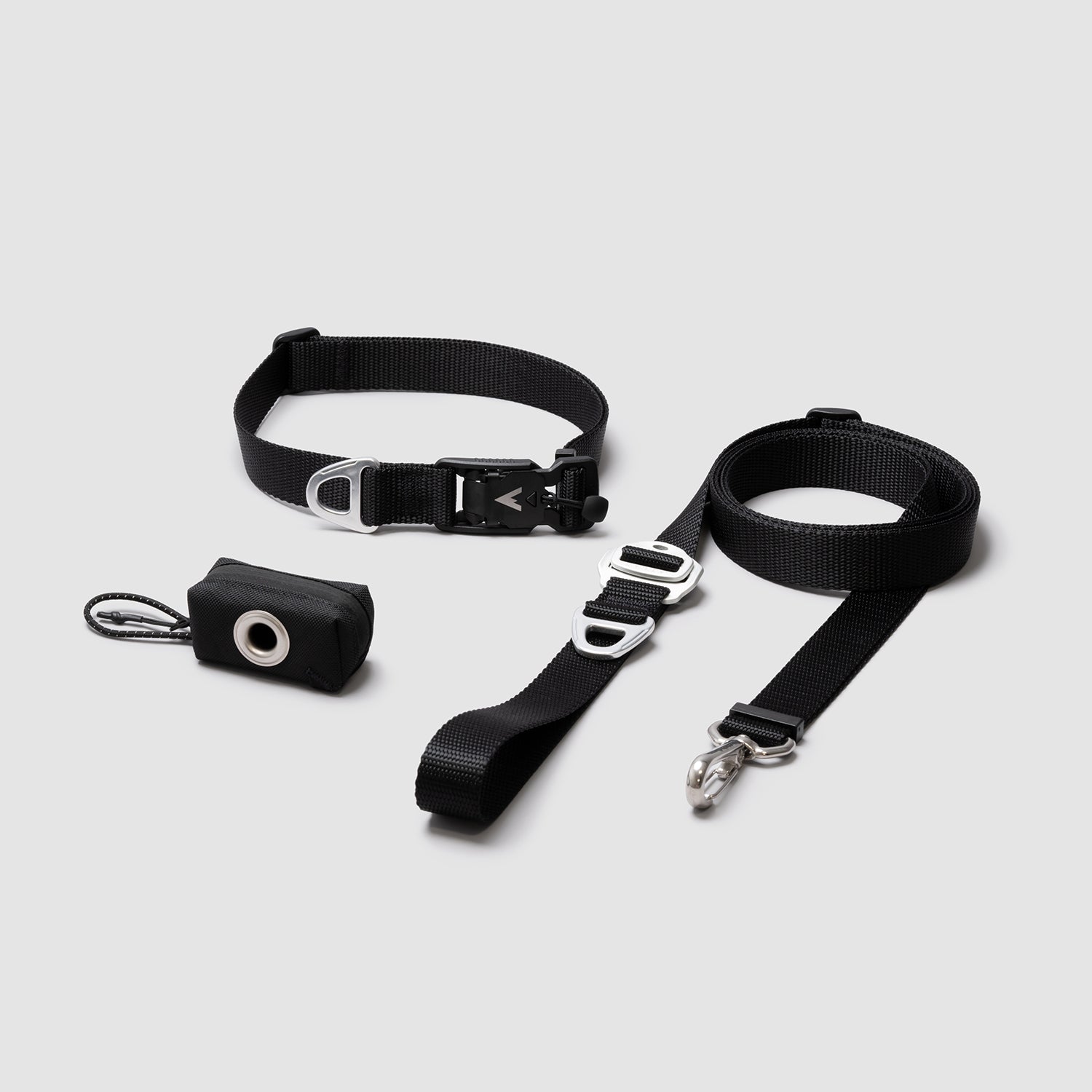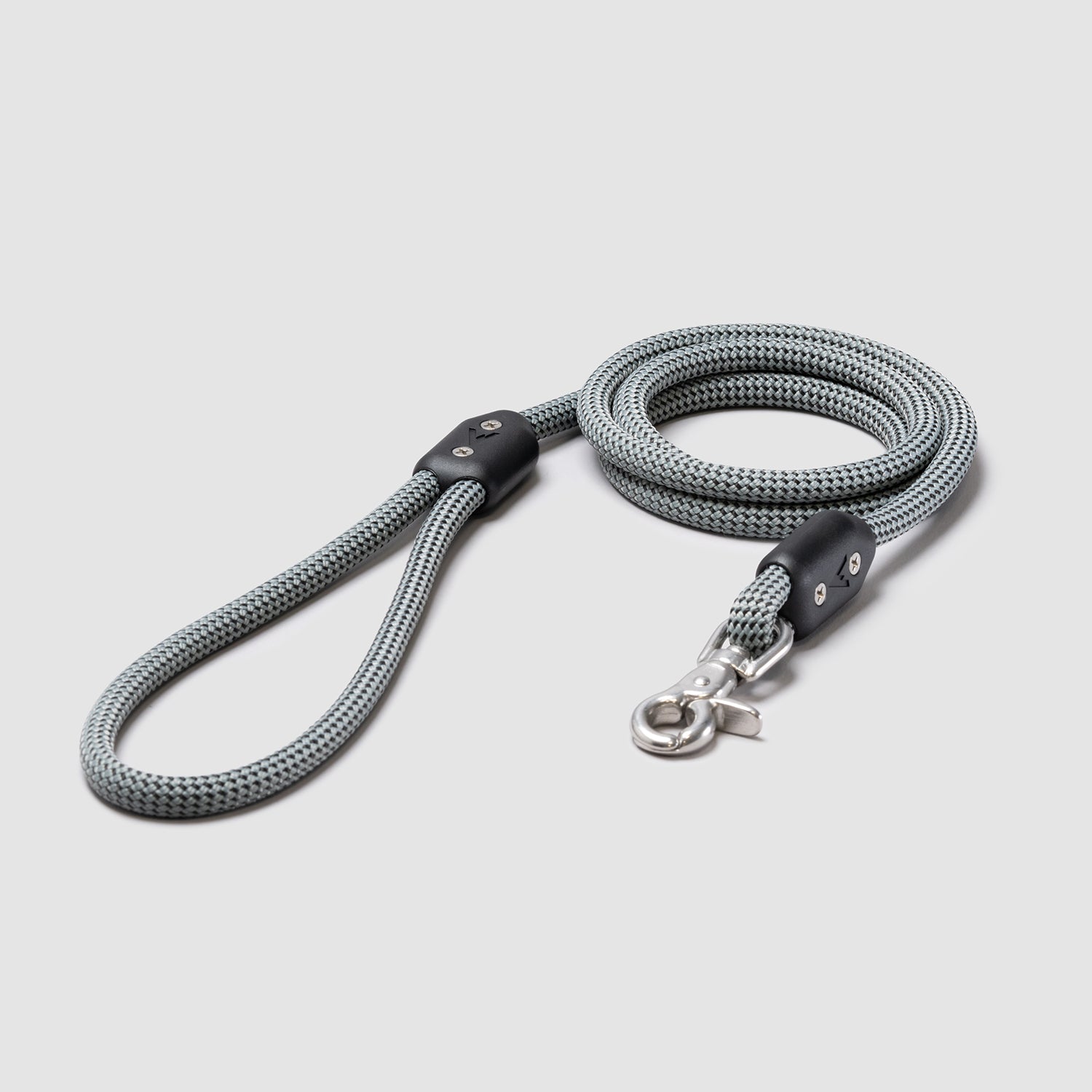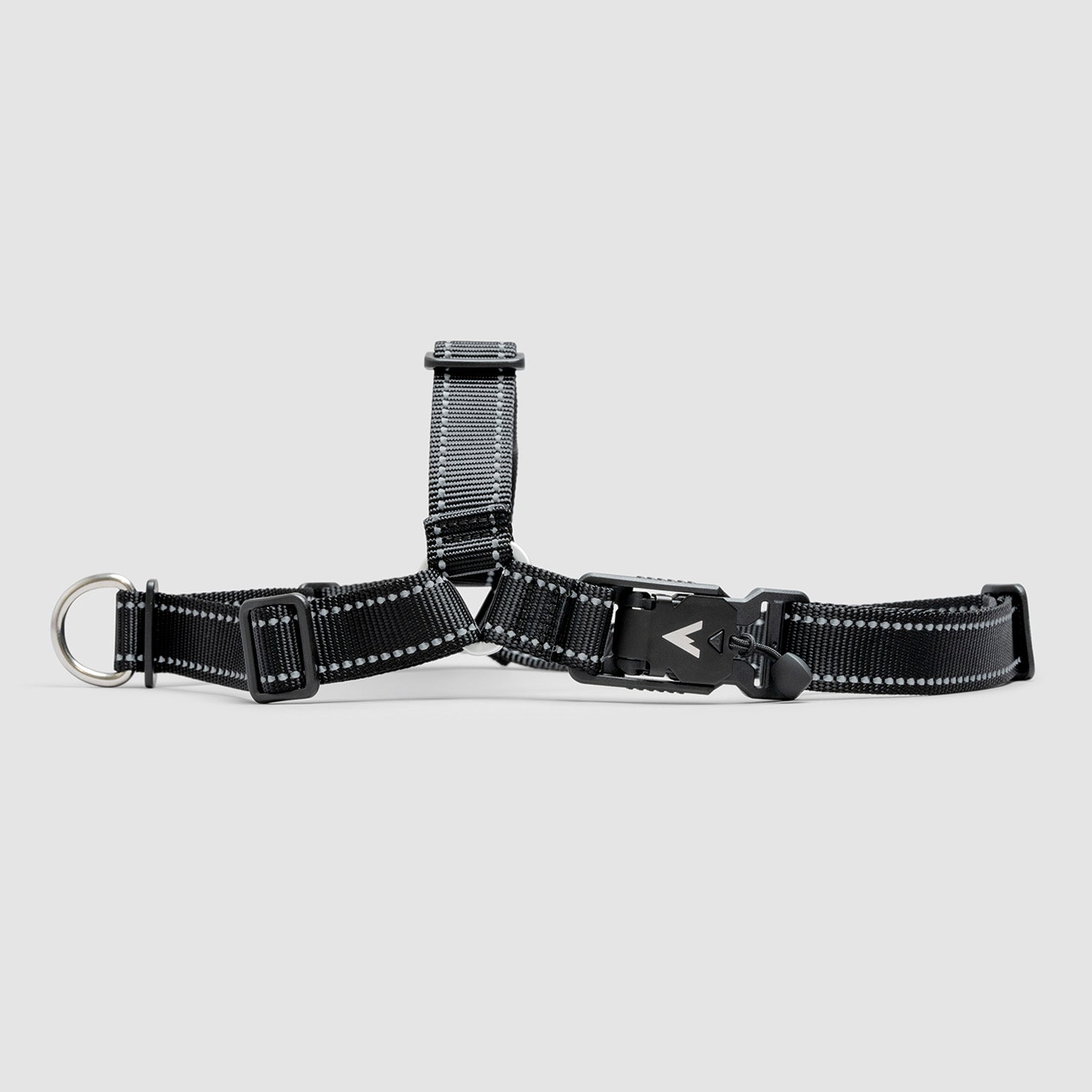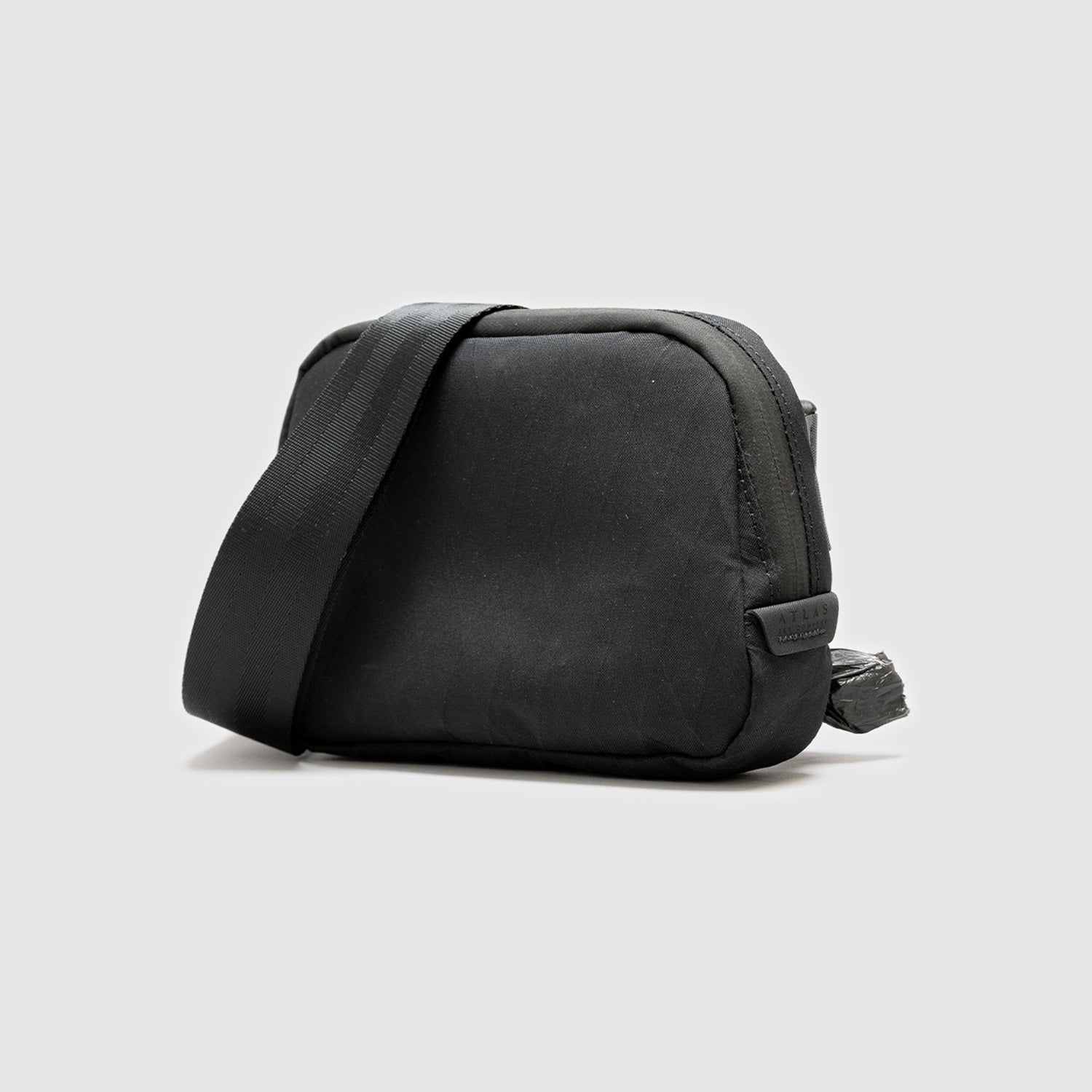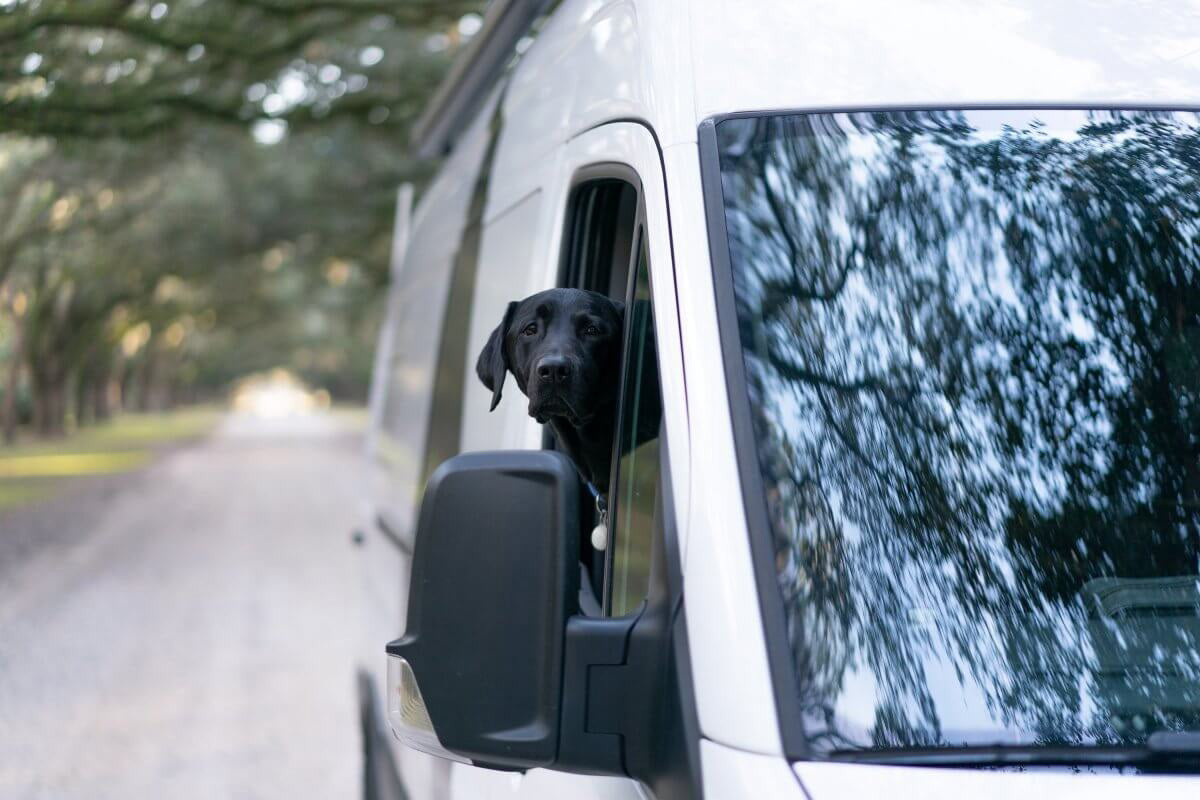The Atlas Guide to Biking with your Dog

You’ve seen them rolling around your neighborhood and tearing up the trails - the cool dogs in the bike gang, trotting along with their cyclist humans like they’re training for the Tour. Wonder if your pup could ever earn his maillot jaune? The Atlas team put together this guide just for you.
So… is that safe?
Asking your pup to keep pace with a bike is pro-level adventuring, and although everything is more fun with your best friend trotting along at your side, biking is only for fit, active pups. Take your dog’s age, size, and fitness level into account to determine if cycling is an appropriate activity for him.
Puppies (up to 2 years old) should sit this one out - strenuous exercise like running with a bike can cause irreparable bone and joint damage that could stunt growth. Senior dogs should probably stay home, as well. Even if your older dog could bomb the techy trails in his heyday, an adventure as intense as biking is likely too extreme for him as he enters his golden years. Be honest with yourself about whether your pup is up to the task.
Certain breeds take more naturally to bike life. Medium to large working dogs who have a lot of energy are a logical fit to ride with - think sled or herding breeds, like huskies and border collies. Daily walks not tiring your pup out? Biking might be just the thing he’s been dreaming about.
Tip: watch out for prey! The same energetic traits that make herding breeds excellent cycling partners can also put you both at risk of injury if a tempting critter crosses your path. Think twice about biking with your dog if he tunes out your verbal commands. Keep some high-value (i.e., stinky) treats in your jersey for extra sway.
More petite pooches - 20 lbs and under - should be considered on a case-by-case basis. Your energetic Jack Russell may be chomping at the bit to be your bike buddy, but your teacup chihuahua’s tiny legs just aren’t built for the road. You can always get a basket for her instead.
If your pup is out of shape or just starting a fitness program, hold off on biking with him. Your dog should be comfortable walking, then jogging for several miles at a time before cycling with him is an option. Remember - the bike is a simple machine that makes it easier for the rider, but your pup companion is still doing twice the hard work. Don't leave home without bringing enough water for both of you, as well as a collapsible travel bowl like our Lifetime Bowl.
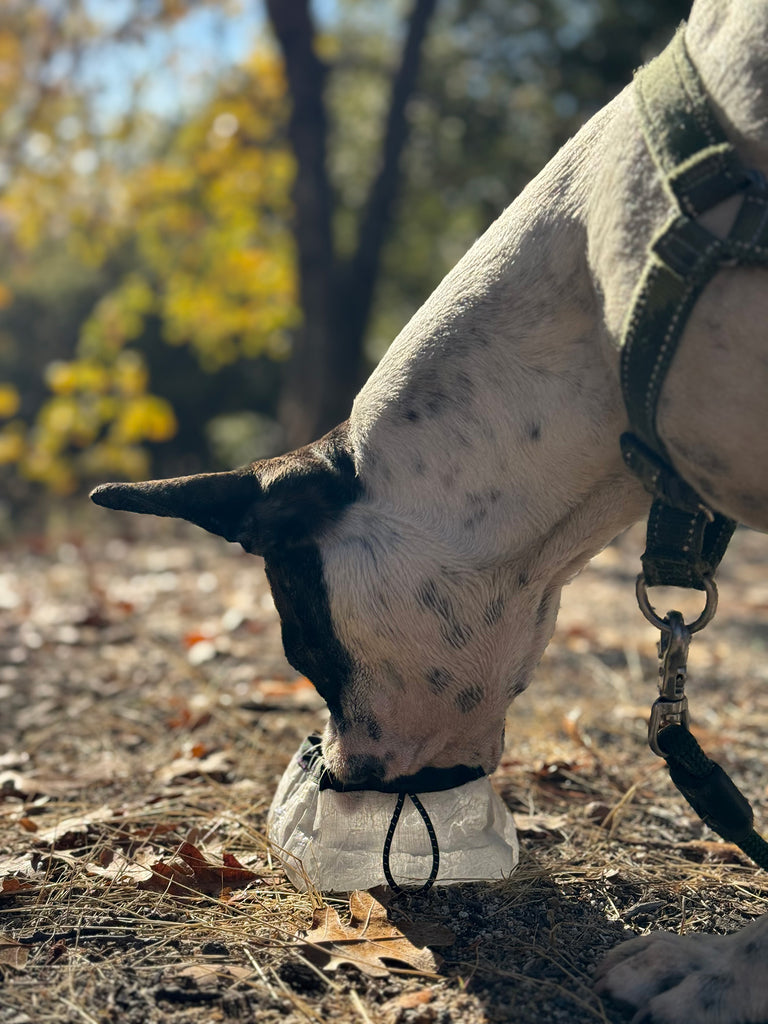
Don't leave home without adequate hydration for both you and your pup.
Geek out on gear.
A sturdy harness is absolutely essential for dog biking. Attaching a leash to your pup’s neck puts him at much greater risk of injury when traveling on wheels at higher speeds. The safest way to strap up for cycling is to orient the harness so the leash clips at the back, between your dog’s shoulders (bonus: our Lifetime Harness is reversible, so it can be adjusted to clip at the front or back). This position provides the human with the most control while protecting your pup from strangling and tangling.
Keep your reins pretty short - you want your leash to be loose enough that it doesn’t get tangled in your pedals, but tight enough that your pooch can’t cut across your front tire. At five feet long, our Lifetime Leash is a great fit for cycling. For increased shock absorption, a variety of bungee leash extenders that attach easily to your Lifetime Leash are available on the market.
Tip: for the most control, attach the leash to the post beneath the bike saddle, and never to the handlebars, where an impulsive reaction to a squirrel could leave you both with a case of road rash.
If - and only if - you have a very well-behaved dog who is trained to stay beside your bike, knows to stop at crosswalks, and has mastered verbal commands, then you can test riding with him off-leash in a safe, low-traffic area. Just remember to keep his Lifetime Collar on for identification and contact info if the worst happens and he bolts.
Don’t bonk! Or crash. Or freak out.
Bikes are strange beasts, and the mere sight of them makes some dogs nervous. Even if your pooch doesn’t spook when he sees one, it’s a good idea to condition him to coexist peacefully with it before you get riding.
Start out by simply letting your dog inspect the bike. Stand next to it with him and give him treats and praise while he sniffs around it so he creates a positive association with it. For pups who are scared of bikes, this might be all that your first sessions consist of. Be patient, and stick with it - the more exposure he has to that wheeled creature, the more comfortable he’ll be.
Next, take the bike for a walk together. Attach your dog’s leash to the bike so he gets used to it not being in your hand. It’s best to keep your body between your bike and your buddy, particularly if he’s still a little nervous. Once he’s mastered that, mount the bike and pedal slowly for a few blocks. Practice gently speeding up, slowing down, and stopping, followed by some wide turns. As your pup becomes comfortable, increase your speed, taking care to monitor how he handles the road.
Tip: be verbal. Find commands that you can stick with so your dog can learn how to ride with you seamlessly. For example, if you have to change speeds, repeating “slow, slow” while braking or saying, “ok, let’s go!” while speeding up will teach your pup how he needs to adjust his gait.
Roll deeper than one pup? More advanced riders can invite their pack (although we don’t recommend biking with more than two dogs at a time). It’s easiest to have one mutt on either side of you as you ride to avoid tangling leashes.
Let the good times roll.
Although it’s advanced-level adventuring, biking while your energetic pup trots along at your side can be incredibly fun for your both of you. If he’s not up to the challenge, you might want to invest in a child-sized bike trailer - for the lazy dog who rides in style.


